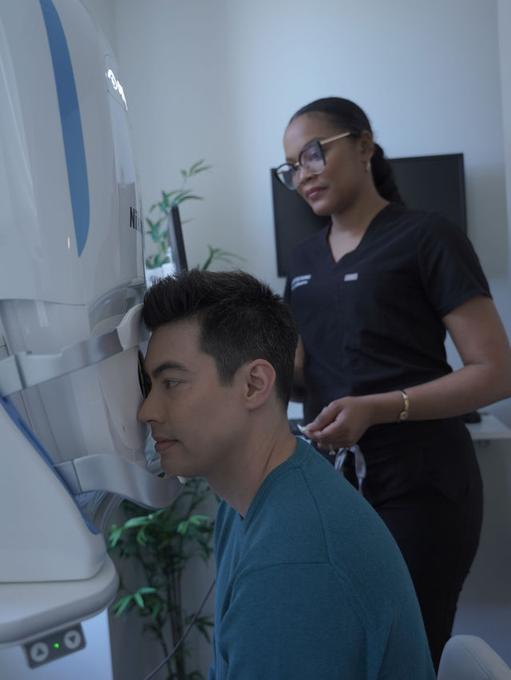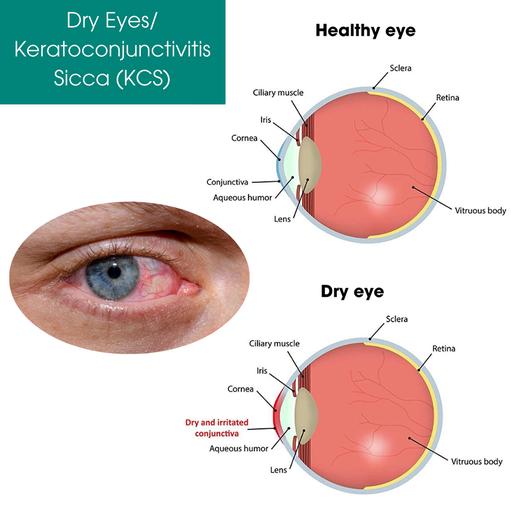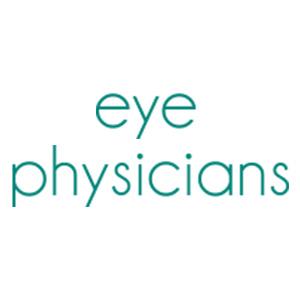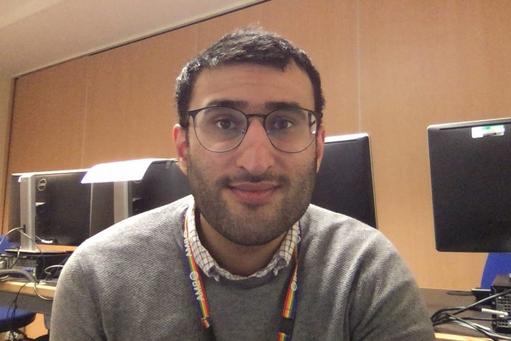Directory
Directory:
Tags:

What Is an Eye Emergency?
Emergency Eye CareAn eye emergency refers to any sudden or severe eye issue that demands prompt attention from an emergency eye doctor. These emergencies encompass eye injuries, unexpected visual changes, intense eye pain, foreign objects in the eye, chemical exposure, and the sudden appearance of flashing lights or floaters. Conditions such as conjunctivitis, characterized by pain, redness, and discharge, can also lead to an eye emergency.
Upon your visit, the emergency optometrist conducts a thorough examination to assess the type and severity of the issue. This evaluation may involve using specialized equipment, such as a slit lamp, to detect any eye injuries or abnormalities. Treatment options, including medications, eye drops, irrigation, patching, or surgical procedures, depend on the findings.
If you require an emergency eye doctor in Manhattan, consider seeking care from the family eye experts at Eye Physicians in NYC. They offer treatment for both adults and children at their walk-in eye clinic in NYC.
Emergency Eye Care Near Me: Alleviate Your Pain and Preserve Your Vision
When dealing with an injury that affects your eye or causes sudden changes in vision, whether it’s a foreign object, chemical exposure, or other serious conditions, seeking prompt medical attention is essential. Choose an ophthalmologist or optometrist who is available promptly, especially during off-hours or weekends, and has experience in diagnosing and managing eye emergencies like central retinal artery occlusions, chemical injuries, and retinal detachments.
How to Find a Doctor Offering Emergency Eye Care in Your Area
If you’re looking for an emergency eye doctor nearby, here are a few tips:
- Reach out to friends and family for recommendations.
- Search online for “emergency eye care near me,” “emergency eye doctor near me,” and “24 hour emergency eye care near me.”
- Read reviews of local emergency eye doctor online and schedule consultations with them to get to know their practice.
Recognized worldwide as leaders in the field, the ophthalmologists and optometrists at Eye Physicians are more than capable of diagnosing emergency eye problems and offering solutions. We will provide you with the best treatment for your needs to help ensure you have a safe and speedy recovery.
Eye Physicians
110 Lafayette St, Suite 503
New York, NY 10013
Office Tel: (212) 292-4814
Fax: (212) 628-0698
Web Address: https://www.myeyephysicians.com/
Our locations on the map: https://maps.app.goo.gl/pkDgr4UdoZSScuaR7
https://plus.codes/PX9X+8M New York, USA
Nearby Locations:
Lower Manhattan | Little Italy | Chinatown | Civic Center | Tribeca | SoHo
10013 | 10012 | 10007 | 10002
Working Hours:
Monday: 8 am–5 pm
Tuesday: 8 am–5 pm
Wednesday: 8 am–7 pm
Thursday: 8 am–5 pm
Friday: 8 am–5 pm
Saturday: 8 am–5 pm
Sunday: Closed
Payment: cash, check, credit cards.
Directory:
Tags:

Having dry eyes can be very uncomfortable. But even if you let it go too long without effective dry eye treatments, you may end up with serious consequences. Don’t take chances with your eyesight. Call the best dry eye doctor near me in New York City at Eye Physicians. They provide dry eye treatment for you and your whole family with an unsurpassed level of expertise. Whether your dry eyes are a new phenomenon or they’ve been lingering for a while, call Eye Physicians now for an appointment. They do their best to get you in and out with effective dry eye treatment within an hour.
What Is Keratoconjunctivitis Sicca?
Keratoconjunctivitis sicca (KCS) is a common dry eye ailment that causes irritability to your eyes. Dry eye has several internal and external causes. Constant tears are what keep your eye lubricated, so a lack of tears causes problems, many of which lead to more than just discomfort. The terms dry eye and KCS are usually used interchangeably. They both are conditions caused by a lack of proper tear production or an increase in tear evaporation.
Some of the more common symptoms of dry eyes include:
- Stinging or burning feeling
- Watery eyes
- Red eyes
If you’re having any of these symptoms, you may have dry eyes. Left untreated by a dry eye doctor near me, the symptoms and problems associated with dry eyes will have a negative effect on your lifestyle and your health. If you want dry eye treatment near me in NYC, visit the Eye Physicians. The experienced optometrists at the Downtown Manhattan location have the solution to your dry eyes problem, as well as for other eye health issues.
Eye Physicians
110 Lafayette St, Suite 503
New York, NY 10013
Office Tel: (212) 292-4814
Fax: (212) 628-0698
Web Address: https://www.myeyephysicians.com/
Our locations on the map: https://maps.app.goo.gl/pkDgr4UdoZSScuaR7
https://plus.codes/PX9X+8M New York, USA
Nearby Locations:
Lower Manhattan | Little Italy | Chinatown | Civic Center | Tribeca | SoHo
10013 | 10012 | 10007 | 10002
Working Hours:
Monday: 8 am–5 pm
Tuesday: 8 am–5 pm
Wednesday: 8 am–7 pm
Thursday: 8 am–5 pm
Friday: 8 am–5 pm
Saturday: 8 am–5 pm
Sunday: Closed
Payment: cash, check, credit cards.

Eye Physicians
Dr. William Hogue, ODWorld-class optometry and ophthalmology care and cutting-edge technology distinguish Eye Physicians. Our New York City ophthalmologists and optometrists trained and served as educators at some of the world’s most esteemed and highly regarded academic institutions.
NYC Eye Physicians are proud to be on USA Newsweek’s list of 350 best ophthalmologists and optometrists. Using the latest advancements and techniques in optometric practices, our doctors offer a full range of Optometry & Ophthalmology services, from eye exam and treatment for dry eyes, burning eyes, and eye stye to an accurate assessment of refractive errors, like nearsightedness/farsightedness/astigmatism, and eyeglasses or contact lenses. At Manhattan Eye Physicians, you’ll find the individualized, compassionate and patient-centric Optometry & Ophthalmology care you need in the safe, reassuring hands of eye experts.
To provide more comprehensive eye care, our ophthalmologists Downtown use the newest diagnostic equipment available in the USA, such as Optical Coherence Tomography (OCT), Digital Slit Lamps, Automated Phoropters, Zeiss Visual Field Analyzers, VT1 Vision Screeners and Retina Cameras. These technologies offer earlier detection of various eye-related conditions and improved patient outcomes.
Conveniently located in the NYC Downtown, the Eye Physicians centers boast state-of-the-art, certified, and approved optometry and ophthalmology facilities. Visit our office near you and meet our eye physicians NYC Richard F. Spaide, MD, Michael J. Cooney, MD, MBA, and William Hogue, OD, to experience skill, knowledge, and compassion. For excellent patient care, make your appointment today at (212) 292-4814. Visit the emergency eye doctor near me.
Eye Physicians
110 Lafayette St, Suite 503
New York, NY 10013
Office Tel: (212) 292-4814
Fax: (212) 628-0698
Web Address: https://www.myeyephysicians.com/
Our locations on the map: https://maps.app.goo.gl/pkDgr4UdoZSScuaR7
https://plus.codes/PX9X+8M New York, USA
Nearby Locations:
Lower Manhattan | Little Italy | Chinatown | Civic Center | Tribeca | SoHo
10013 | 10012 | 10007 | 10002
Working Hours:
Monday: 8 am–5 pm
Tuesday: 8 am–5 pm
Wednesday: 8 am–7 pm
Thursday: 8 am–5 pm
Friday: 8 am–5 pm
Saturday: 8 am–5 pm
Sunday: Closed
Payment: cash, check, credit cards.
Our social links:
https://www.facebook.com/eyephysiciansny/
https://twitter.com/myeyephysicians
https://www.linkedin.com/company/eye-physicians/
https://www.instagram.com/eyephysiciansny/
https://www.youtube.com/@EyePhysiciansNY
https://www.yelp.com/biz/eye-physicians-new-york
https://www.tumblr.com/myeyephysicians
https://www.pinterest.com/myeyephysicians/
https://www.tiktok.com/@myeyephysicians
Read more: https://doctor.webmd.com/doctor/william-hogue-44709d70-6f80-4e3b-8362-636ac839a880-overview
View other locations Eye Physicians has been mentioned
https://www.local.com/business/details/new-york-ny/eye-physicians-151755385.aspx
https://www.mapquest.com/us/new-york/eye-physicians-351303720
https://www.merchantcircle.com/eye-physicians-new-york-ny
https://www.mylocalservices.com/Eye+Physicians-New+York-New+York-24612168.html
https://yempl.optimizelocation.com/partnerpages/navmii/eye-physicians-new-york-new-york-us-caac7c
view this profile
Directory:
Tags:

NYC Eye Physicians are proud to be on USA Newsweek’s list of 350 best ophthalmologists and optometrists. Using the latest advancements and techniques in optometric practices, our doctors offer a full range of Optometry & Ophthalmology services, from eye exams and treatment for dry eyes, burning eyes, and eye stye to an accurate assessment of refractive errors, like nearsightedness/farsightedness/astigmatism, and eyeglasses or contact lenses. At Manhattan Eye Physicians, you’ll find the individualized, compassionate and patient-centric Optometry & Ophthalmology care you need in the safe, reassuring hands of eye experts.
To provide more comprehensive eye care, our optometrists use the newest diagnostic equipment available in the USA, such as Optical Coherence Tomography (OCT), Digital Slit Lamps, Automated Phoropters, Zeiss Visual Field Analyzers, VT1 Vision Screeners and Retina Cameras. These technologies offer earlier detection of various eye-related conditions and improved patient outcomes.
Eye Physicians
110 Lafayette St, Suite 503
New York, NY 10013
Office Tel: (212) 292-4814
Fax: (212) 628-0698
Web Address: https://www.myeyephysicians.com/
Our locations on the map: https://maps.app.goo.gl/pkDgr4UdoZSScuaR7
https://plus.codes/PX9X+8M New York, USA
Nearby Locations:
Lower Manhattan | Little Italy | Chinatown | Civic Center | Tribeca | SoHo
10013 | 10012 | 10007 | 10002
Working Hours:
Monday: 8 am–5 pm
Tuesday: 8 am–5 pm
Wednesday: 8 am–7 pm
Thursday: 8 am–5 pm
Friday: 8 am–5 pm
Saturday: 8 am–5 pm
Sunday: Closed
Payment: cash, check, credit cards.

Leigh Plowman
Dry Eye DirectoryAt Dry Eye Directory, our passionate team, led by Dr. Leigh Plowman, understands the profound impact that dry eyes can have on every aspect of a person's life. As a result, our free website endeavors to combine comprehensive knowledge with genuine compassion. Through detailed resources, expert advice, and a supportive community, we strive to transform lives, helping individuals break free from the shackles of dry eyes and embrace a future filled with comfort and vitality. If you suffer from dry eye syndrome, you know how uncomfortable it can be. The Dry Eye Directory is an essential resource that can help you manage your symptoms and find the best treatments available.
Email: leigh@dryeyedirectory.com
Working hours: 24/7
view this profile

ranchhodrai eye hospital
Eye Hospital in Ahmedabad | Best Eye Specialist Doctor AhmedabadRanchhodrai Eye Hospital is Ahmedabad's top rated eye hospital. Find the best eye specialist doctor in Ahmedabad with our detailed search. Ranchhodrai Eye Hospital Ahmedabad's eye doctor, surgeon (ophthalmologist) is leading eye care & ICL surgery clinic center in Memnagar, Ahmedabad.
view this profile

Hello Ortho Petaluma
Hello Ortho Petaluma - Jordan Lamberton DDS, MSDWe’re OCD about being patient-centered, customer obsessed, and setting a new standard in the style and quality of the orthodontic experience. We Re-Define the Orthodontic Experience with Boutique experience Virtually no wait times Retainers for life State-of-the-art technology Welcome to the Hello Ortho Family!
view this profile

Deepa Gupta
Best Eye Specialists in GurgaonDr Deepa Gupta is one of the best eye specialists in gurgaon.Dr Deepa Gupta received her MBBS from Kasturba Medical College, Manipal university. She has done her Masters in Ophthalmology from Guru Nanak Eye Centre, Maulana Azad Medical College, Delhi University.She has worked as a cataract, cornea and refractive surgery consultant with Centre for Sight for more than 5 yrs. She is well-versed in performing all kinds of cataract surgeries especially no injection, stitchless phacoemulsification with implantation of variety of intraocular lenses.Her wide experience in refractive surgery for removal of glasses include customised LASIKs, PRK, i-LASIK, SMILE procedures and Implantable contact lenses.
view this profile

Dr Brijinder Singh Rana
Chief Eye SurgeonA NABH accredited eye hospital in Ludhiana and Dr. Brijinder S Rana is the chief Eye Surgeon and Retina Specialist for any kind of eye problem. Get affordable eye surgeries in Ludhiana at Rana eye hospital.
view this profile
Live streaming cataract surgery could assist medical students In their learning, this technique would be of interest to ophthalmologists who wish to deliver safe enhanced experiential learning to undergraduate ophthalmology teaching during the COVID-19 pandemic.
#Ophthalmology #MedicalStudents #Covid19






